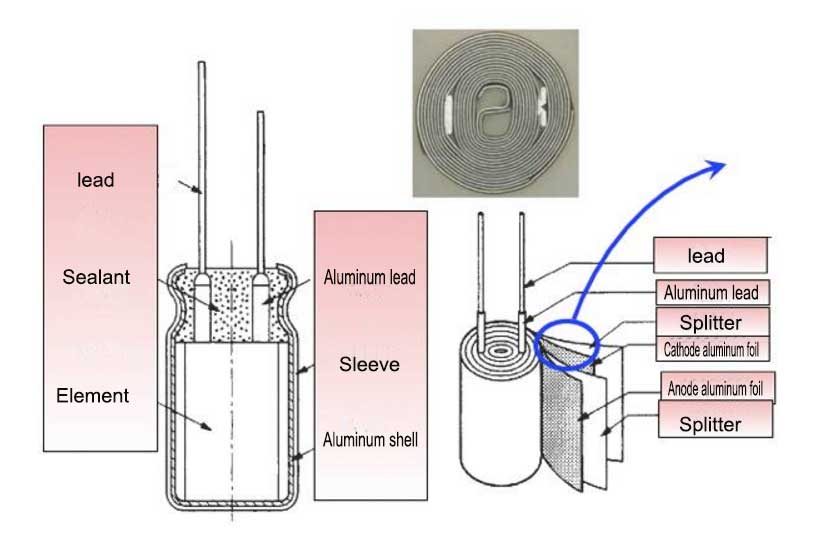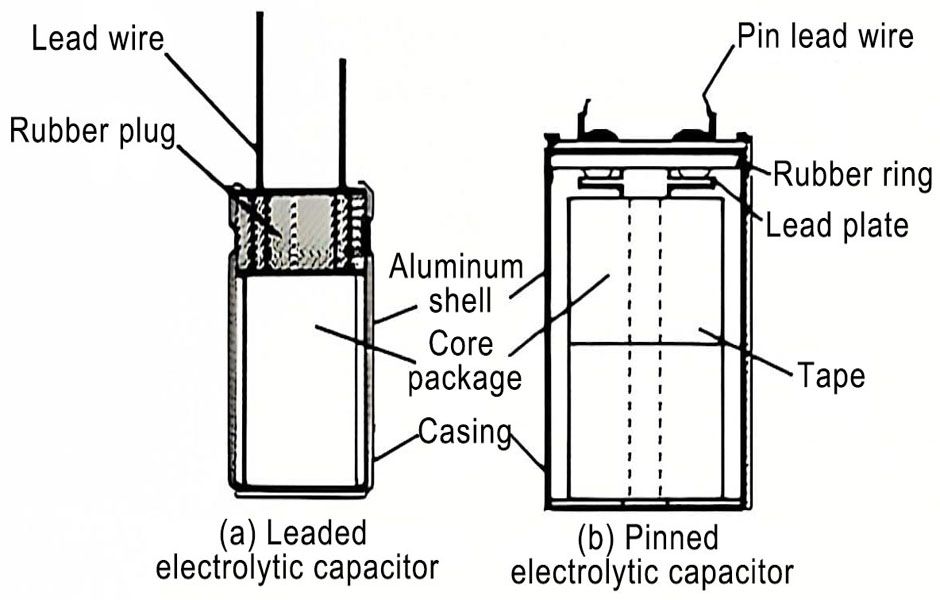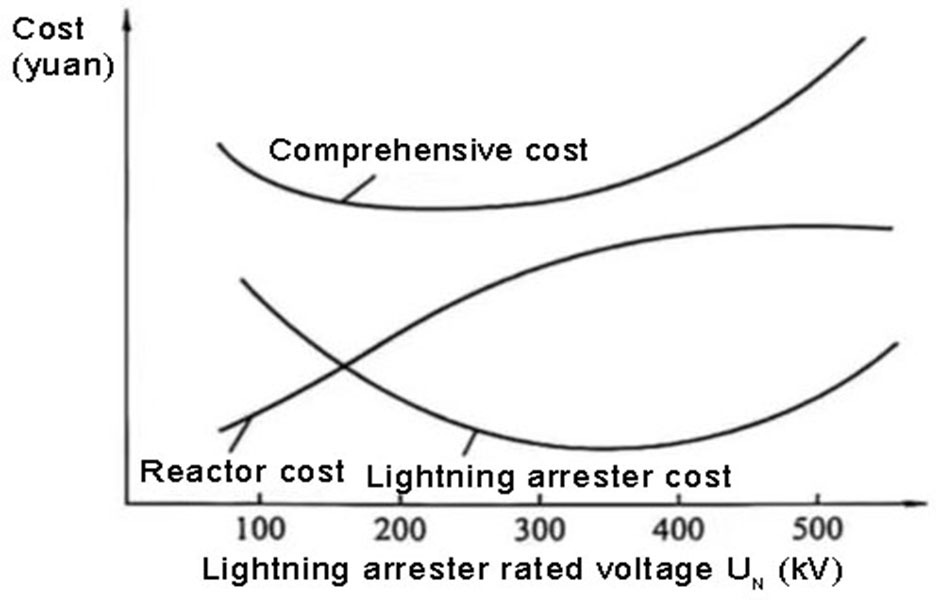There are eleven steps in the manufacturing Aluminum electrolytic capacitor manufacturing process, and each step is critical.
Step 1: Corrosion of aluminum foil.
The manufacturing essentials of aluminum foil. In order to increase the area of war between the aluminum foil and the electrolyte, the appearance of the aluminum foil in the capacitor is not smooth. Instead, the appearance is formed into a rugged and unyielding shape by electrochemical corrosion. This may increase the appearance product by 7 to 8 times. The electrochemical corrosion process is quite complicated, which involves the type and concentration of the corrosion liquid, the appearance of the aluminum foil, the rate of corrosion, the dynamic balance of the voltage, and so on.
The second step: oxide film formation process.
After the aluminum foil is electrochemically corroded, it is necessary to use chemical methods to oxidize its appearance to aluminum oxide, which is the medium of aluminum electrolytic capacitors. After oxidation, carefully review the appearance of aluminum oxide to see if there are freckles or cracks, which will be insufficiently removed.
The third step: cutting the aluminum foil.
This measure is simple and clear. It is to cut a whole piece of aluminum foil into several small pieces to make it necessary for proper capacitor manufacturing.
The fourth step: riveting of leads.
The pins outside the capacitor are not directly connected to the inside of the capacitor, but are connected to the inside of the capacitor through the inner lead. Therefore, in this step we need to properly connect the inner leads of the anode and cathode to the outer leads of the capacitor through ultrasonic bonding. The outer lead usually adopts copper-plated iron wire or oxidized copper wire to reduce resistance, while the inner lead adopts aluminum wire and is directly connected with aluminum foil. The public pays attention to these small measures without any fault. The fine processing requirements are very high.

Step 5: Winding of electrolytic paper.
The electrolyte in the capacitor is not directly poured into the capacitor and soaks the aluminum foil in a liquid state, but is laminated with the aluminum foil through the electrolytic paper that has absorbed the electrolyte. Among them, the selection of electrolytic paper and ordinary paper are somewhat different in their formulations. They are microporous. The appearance of the paper is not as good as impurities, otherwise it will affect the identity and performance of the electrolyte. In this step, the electrolytic paper that does not absorb the electrolyte is pasted with the aluminum foil, and then rolled into the capacitor casing, so that the aluminum foil and the electrolytic paper form a “101010” isolation state.

Step 6: Impregnation of electrolyte.
After the electrolytic paper is wound up, pour in the electrolyte so that the electrolyte is impregnated on the electrolytic paper. With the innovation of electrolyte formulation and the improvement of electrolytic paper manufacturing skills, the current ESR value of aluminum electrolyte capacitors has gradually improved, resulting in more than one-fold of the previous.
Step Seven: Assembly.
This step is to assemble the aluminum shell on the surface of the capacitor and connect the outer leads at the same time. The capacitor has been fundamentally formed by this time.
Step 8: Crimping.
If it is a kind of “wrapped” capacitor, it is necessary to pass this step to cover the surface of the capacitor with the PVC film covering the surface of the capacitor. However, the current use of PVC film capacitors has become less and less, mainly because this raw material is not suitable for environmental protection, and has little to do with performance.
Step 9: Combine assembly.
The tenth step: charging, aging test.
Aging is the last step in the production of capacitors. In this process, a DC voltage greater than the rated voltage but less than the forming voltage will be applied. Generally, it will be carried out at the rated temperature of the capacitor (maybe at other temperatures or even room temperature). This process can be Repair the defects of the oxide film. Aging is a good way to screen out early failure capacitors. Low initial leakage current is a sign of effective aging.
The eleventh step: parameter review.
Leakagt Current up is abbreviated as Leakagt Current up (LC). Leakagt Current up is to measure the addition of DC voltage to the capacitor [This voltage is marked on the capacitor rubber tube as the voltage, which is also called Work Voleage (work voltage). The magnitude of the DC current passing through is as small as possible. Capacity review: Capacity (capacitors referred to as CAP). The goal of the review is to test whether its value is within the allowable deviation range. Both overshoot and undershoot are insufficient.
3DF review: temperature is 25℃, frequency is 120HZ, non-polarity is usually 1KHZ (test conditions).
External review: that is, the appearance of the capacitor is aesthetically pleasing and there are no stains.




